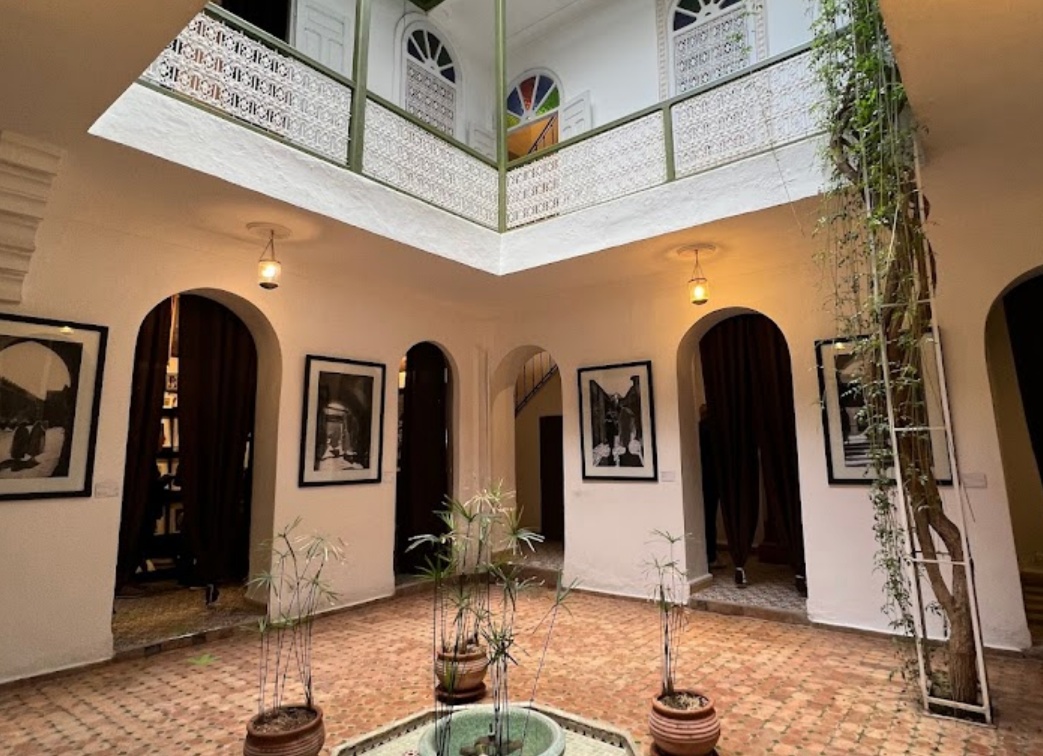The House of Photography in Marrakech: A Portal to the Visual Past
Table of Contents
Introduction to The House of Photography
Nestled in the heart of Marrakech’s bustling medina, the House of Photography (Maison de la Photographie) stands as a testament to the rich visual history and cultural heritage of Morocco. Since its opening in 2009, this museum has become a pivotal institution, offering visitors a unique glimpse into Moroccan life from the 1870s to the 1950s through a remarkable collection of photographs, glass negatives, and original prints. A visit to the House of Photography is not merely a tour through a gallery; it is an immersive journey into the visual memory of a nation.
A Vision of Preservation and Education
The House of Photography was founded by Patrick Manac’h and Hamid Mergani, who shared a passion for Moroccan culture and photography. Their vision was to create a space that not only preserved historical photographs but also made them accessible to the public, providing educational insights into Morocco’s past. The museum is housed in a beautifully restored riad, offering a traditional Moroccan architectural setting that enhances the experience of exploring historical collections.
The Collection’s Rich Tapestry
The museum’s collection comprises over 8000 photographs, 2000 glass negatives, and numerous original prints, which were meticulously collected from various sources over the years. These images capture a wide array of subjects, from the majestic Atlas Mountains and the Sahara Desert to the daily life in bustling souks and serene riads. Notable photographers featured in the collection include George Washington Wilson, Marcelin Flandrin, and the famous Moroccan photographer, Abdelghani Benslimane.
A Journey Through Time
A visit to the House of Photography is akin to stepping back in time. Each floor of the riad offers a curated exhibition focused on different themes or periods in Moroccan history. The ground floor might display bustling market scenes and urban life, while the upper floors showcase rural landscapes and portraits of Moroccan tribes. The photographs not only document physical places but also capture the essence of Moroccan life, offering insights into the customs, clothing, and celebrations of the people depicted.
More Than Just Photographs
Beyond its permanent collection, the House of Photography hosts temporary exhibitions and cultural events that delve deeper into specific aspects of Moroccan culture and history. These exhibitions often feature contemporary photographers whose work echoes the historical themes of the collection, creating a dialogue between the past and present. The museum also conducts workshops and lectures on the history of photography and its role in cultural preservation, attracting students, historians, and photography enthusiasts alike.
The Role of the Museum in Cultural Preservation
The House of Photography serves a crucial role in the cultural landscape of Marrakech by preserving fragile historical documents and promoting the study of Moroccan history through visual arts. It operates not just as a museum but as a cultural center that fosters an appreciation for the importance of visual history in understanding a nation’s heritage. The museum’s efforts in preservation are particularly significant given the hot and arid climate of Morocco, which poses a challenge to the preservation of historical photographs.
Visitor Experience
Visitors to the House of Photography can also enjoy the panoramic terrace that offers stunning views of the medina, the Koutoubia Mosque, and the distant Atlas Mountains. This terrace houses a quaint café where guests can relax with a mint tea or a light meal, reflecting on the historical journeys they have experienced through the photographs.
Enhancing Your Visit
The House of Photography is easily accessible but can be challenging to find in the winding streets of the medina. For those unfamiliar with Marrakech, it is advisable to use a guided tour or a private driver service to navigate to the museum. These services can provide not only transportation but also valuable context about the museum’s collections and the history of the surrounding area.
Conclusion
The House of Photography in Marrakech is more than a museum; it is a portal to Morocco’s past, captured through the lenses of both Moroccan and foreign photographers. It offers a profound perspective on the social, cultural, and geographic changes that have shaped Morocco. For anyone interested in photography, history, or Moroccan culture, a visit to the House of Photography is an essential and enlightening part of experiencing Marrakech.
Additional Resources
To further explore the artistic and historical landscapes of Marrakech, consider visiting other cultural institutions such as the Yves Saint Laurent Museum, dedicated to the work of the famous designer and his connection to Marrakech, or the Berber Museum, which offers insights into the indigenous culture and art of Morocco. Each venue enriches the understanding of Morocco’s diverse cultural heritage.




Marrakech Museum: A Treasure Trove Of Moroccan Art And History - Private Driver Morocco
[…] offers insights into the fashion influences that Morocco had on the famous designer, while the House of Photography provides a visual journey through Morocco’s historical landscapes and cityscapes. Together, these […]